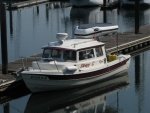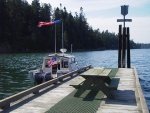Robert H. Wilkinson
Active member
- Joined
- Jan 26, 2011
- Messages
- 1,283
- Reaction score
- 0
- Vessel Name
- Romakeme IV
The longest floating structure in history is going to be launched in the ocean between Japan and South Korea sometime in 2016. Reported to span 2000 metres. It was designed by a teenager to trap garbage(mainly plastic) floating near the surface. They are apparently working on ways to turn the garbage into a fuel. It is a passive system designed to utilize the ocean currents to bring the garbage to it as opposed to ships pulling nets.
Anyone interested can see pictures and read about it from the links you will find if you google the thread title.
Regards, Rob
Anyone interested can see pictures and read about it from the links you will find if you google the thread title.
Regards, Rob


